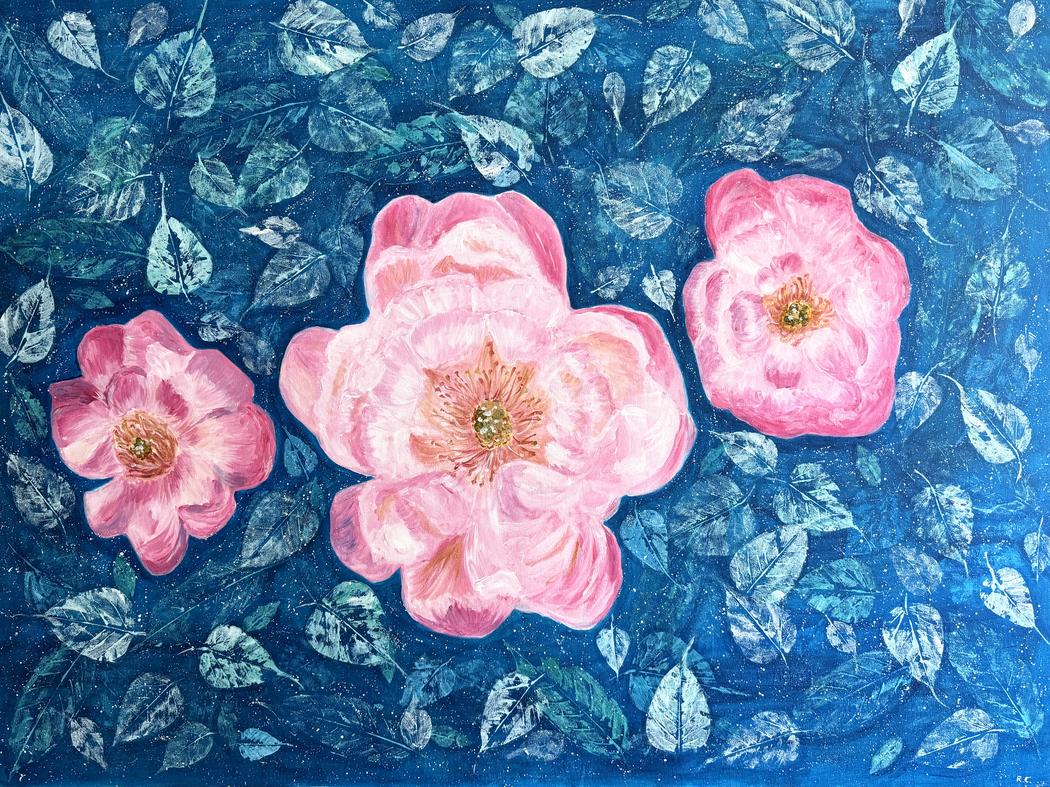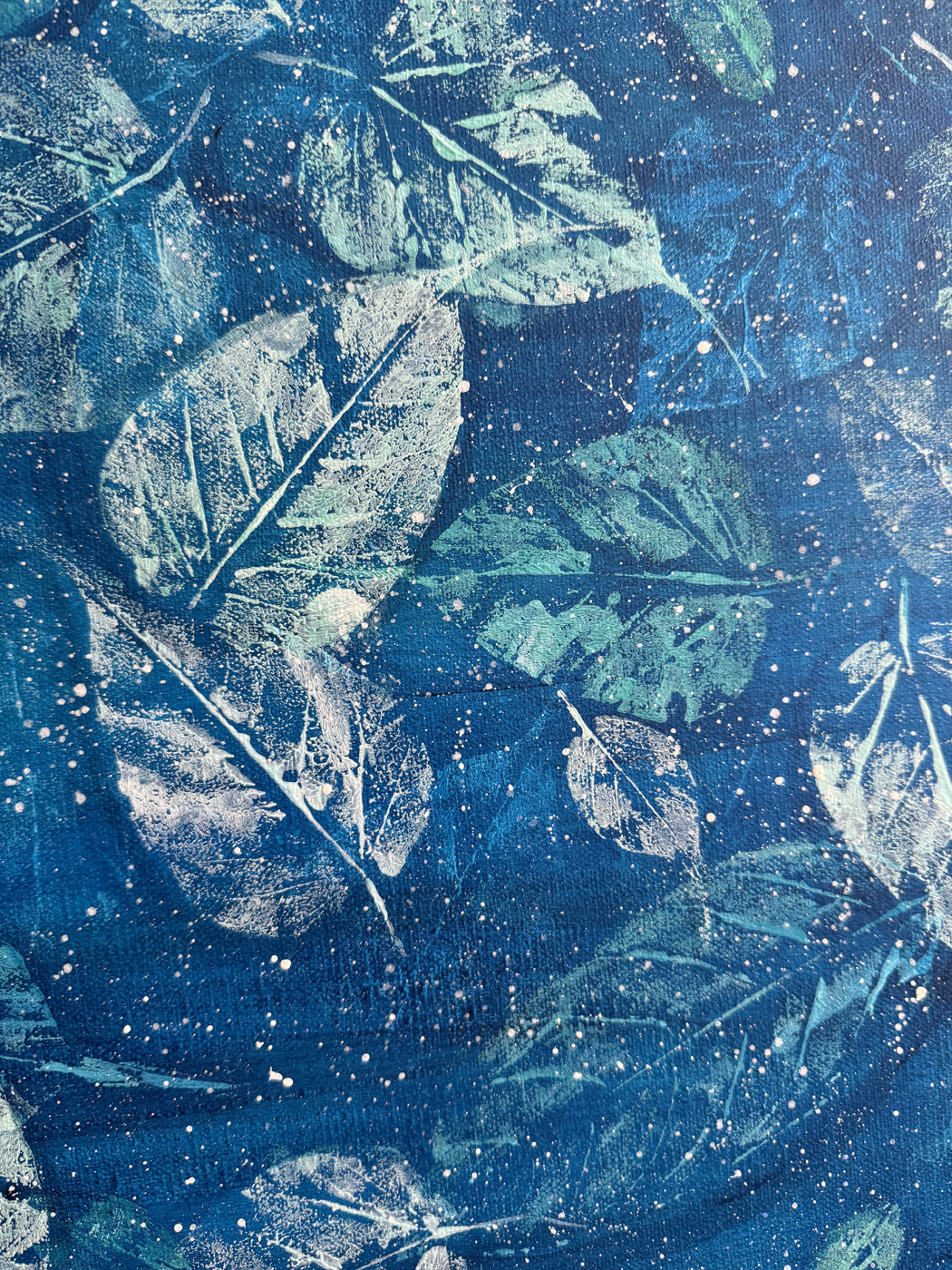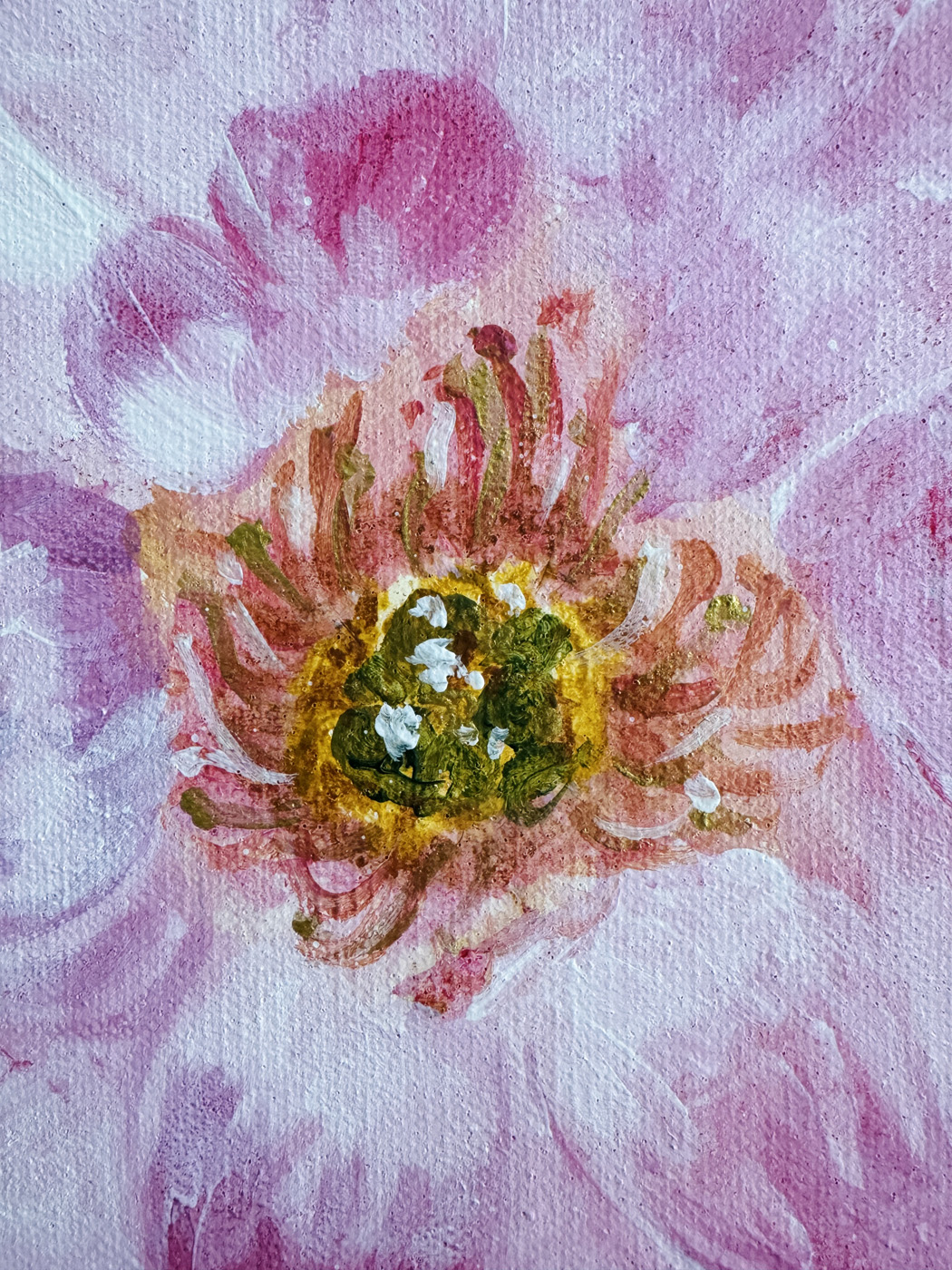Roxanne Chew
Where do you live: Singapore
Describe your art in three words: Grounded, Reflective, Transformative
Instagram
 Roxanne Chew | Rooted In Love | 2025
Roxanne Chew | Rooted In Love | 2025
Your work beautifully integrates art therapy and personal artistic expression. How do these two practices influence each other in your creative process?
My personal art-making and art therapy practice are in constant dialogue. Art therapy has taught me to approach creation with deep listening—to be attuned not only to imagery but also to the emotions, memories, and stories it carries. This mindset naturally shapes my own work, where I allow meaning to unfold through the process rather than force a fixed outcome. In turn, my personal art practice keeps me creatively nourished and grounded, enabling me to show up authentically for my clients. This mutual exchange ensures that both practices are enriched—my art becomes more mindful and intentional, and my therapeutic work benefits from my active engagement with art as a lived experience.
In Rooted in Love, the leaves and flowers carry strong symbolic meaning. Could you share how you chose these particular forms and colors to represent resilience and renewal?
Leaves have always represented grounding and continuity for me, while flowers embody growth, fragility, and beauty. The central pink blossom symbolizes vitality and the strength that emerges through life’s transitions, while the two smaller blossoms suggest the ongoing process of becoming. The blue background evokes calm and depth, providing a steady backdrop for these symbols of renewal.
 Roxanne Chew | Rooted In Love | 2025
Roxanne Chew | Rooted In Love | 2025
The central flower in your composition stands out as a symbol of growth and strength. Was it inspired by a personal experience or a universal message you wished to convey?
It’s both personal and universal. Personally, it reflects my own journey of navigating change and finding balance. Universally, it speaks to the quiet triumphs we all experience when we adapt, heal, and grow despite life’s uncertainties.
You used leaf printmaking in this piece. Could you walk us through your creative process for making these imprints and the emotions you associate with them?
I begin by selecting leaves for their unique shapes, textures, and the way their veins tell their own quiet story. I apply paint to one side of each leaf and press it onto the canvas, transferring the intricate details. Each complete set of prints is then layered with another coat of paint to create depth and richness, with the printing process repeated over and over in layers. This slow, deliberate approach is both meditative and grounding, allowing me to be fully present with each mark while watching the image emerge organically over time.
 Roxanne Chew | Rooted In Love | 2025
Roxanne Chew | Rooted In Love | 2025
As an art therapist, how do you see nature-based imagery—like leaves and flowers—helping people process emotions or navigate transitions?
Nature-based imagery provides an accessible and non-threatening way to explore emotions while also offering a sense of calm. Leaves and flowers carry universal symbolism—change, growth, resilience—that can help people reflect on their own life transitions. At the same time, engaging with nature-inspired forms can have a relaxing effect, slowing breathing, softening tension, and creating space for emotional release. The dual impact—emotional processing alongside physical relaxation—makes nature-based imagery a powerful tool for healing.
This work was created during a period of profound transition. How did the act of making it support your own emotional journey at that time?
During that period of transition, the process became my anchor. The repetitive act of pressing leaves, applying paint, and layering prints one over another mirrored the way I was slowly building stability in my own life. Each layer added depth not only to the canvas but also to my emotional resilience. The meditative rhythm of the process allowed me to slow down, breathe, and hold space for both uncertainty and hope. In many ways, the artwork became a visual record of my own grounding and renewal during that time.
 Roxanne Chew | Rooted In Love | 2025
Roxanne Chew | Rooted In Love | 2025
You also create digital art portraits. How does working in a digital medium compare to working with traditional materials in terms of emotional expression?
Traditional materials connect me physically to the work through texture, scent, and touch—elements that deepen the sensory experience of creation. Digital art, on the other hand, offers fluidity and experimentation without the limitations of physical media. Emotionally, digital portraits allow me to capture likeness and narrative in a way that feels immediate and contemporary, while traditional work holds a tactile intimacy. Both speak different emotional languages, and I value each for what they bring to my practice.

Leave a Reply